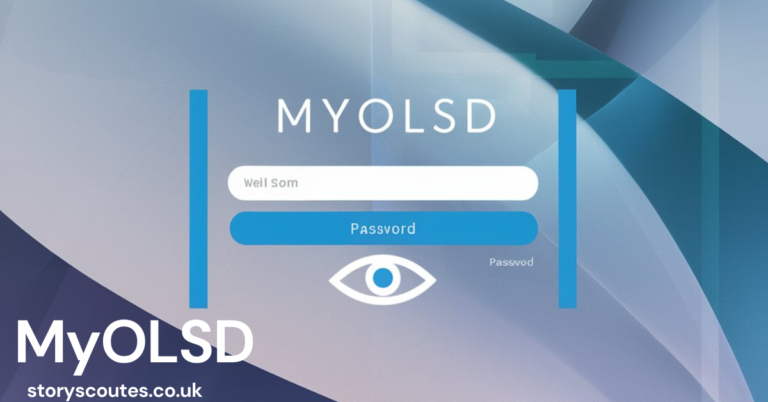XATPES – Turbocharging Data Processing for Peak Performance in 2024
In today’s fast-paced digital world, the need for efficient data processing has never been greater. Enter XATPES, short for X-treme Advanced Technological Processing and Enhancement System.
XATPES optimizes data processing for improved system performance. This advanced technology streamlines information handling, enabling faster analysis and decision-making. XATPES benefits various industries, from finance to healthcare, enhancing efficiency and competitiveness in today’s data-driven world.
This cutting-edge technology is changing the game when it comes to optimizing data processing and boosting overall system performance. In this article, we’ll explore what XATPES is, how it works, and why it’s becoming increasingly important in various industries.
What is XATPES?
XATPES, or the X-treme Advanced Technological Processing and Enhancement System, is a state-of-the-art technology designed to improve system performance by optimizing data processing.
As businesses and organizations deal with ever-increasing amounts of data, the need for faster, more efficient processing becomes crucial. XATPES aims to meet this need by providing a powerful solution that can handle complex data operations with ease.
At its core, XATPES is all about making data processing smoother, quicker, and more effective. It uses advanced algorithms and innovative techniques to streamline how information is handled, analyzed, and used within computer systems.
This means that tasks that once took hours or even days can now be completed in a fraction of the time, allowing businesses to work more efficiently and make better decisions based on up-to-date information.
How Does XATPES Work?
To understand how XATPES works, it’s helpful to break down its name:
Also Read: Vaçpr – Detailed Guide In 2024
- X-treme: This refers to the system’s ability to handle extreme amounts of data and complex processing tasks.
- Advanced: XATPES uses cutting-edge technology and methods that go beyond traditional data processing techniques.
- Technological: The system relies on the latest developments in computer science and information technology.
- Processing: XATPES is primarily focused on how data is handled, analyzed, and transformed within computer systems.
- Enhancement: The goal is to improve and optimize existing processes, making them faster and more efficient.
- System: XATPES is a complete system that can be integrated into existing IT infrastructures.
XATPES works by applying a series of advanced techniques to data processing tasks. These may include:
- Parallel Processing: XATPES can split large tasks into smaller parts that can be processed simultaneously, greatly reducing the overall time needed.
- Machine Learning: The system can learn from past data and experiences to make smarter decisions about how to handle new information.
- Real-time Analytics: XATPES can analyze data as it comes in, providing instant insights and allowing for quick decision-making.
- Data Compression: By using advanced compression techniques, XATPES can store and process more data using less space and resources.
- Intelligent Caching: The system can predict which data will be needed most often and keep it readily available for faster access.
- Adaptive Optimization: XATPES can adjust its processing strategies on the fly based on current system loads and requirements.
By combining these and other advanced techniques, XATPES can dramatically improve the speed and efficiency of data processing tasks.
Benefits of XATPES
The implementation of XATPES can bring numerous benefits to organizations across various industries. Here are some of the key advantages:
- Increased Speed: With XATPES, data processing tasks that once took hours can often be completed in minutes or even seconds. This increased speed allows businesses to react more quickly to changing conditions and make faster decisions.
- Improved Efficiency: By optimizing how data is handled, XATPES can help organizations make better use of their computing resources. This can lead to cost savings and improved overall performance.
- Enhanced Accuracy: Advanced processing techniques used by XATPES can help reduce errors and inconsistencies in data analysis, leading to more reliable results.
- Scalability: As businesses grow and data volumes increase, XATPES can scale to meet these growing demands without a significant drop in performance.
- Real-time Insights: The ability to process and analyze data in real-time means that organizations can gain instant insights into their operations, customer behavior, and market trends.
- Competitive Advantage: By adopting XATPES, businesses can gain an edge over competitors who are still using older, less efficient data processing methods.
- Resource Optimization: XATPES can help organizations make better use of their existing IT infrastructure, potentially reducing the need for expensive hardware upgrades.
- Improved Decision Making: With faster access to accurate, up-to-date information, leaders can make more informed decisions that drive business success.
Applications of XATPES
The versatility of XATPES means it can be applied in a wide range of industries and scenarios. Here are some examples of how XATPES is being used:
Also Read: Amazon’s GPT-44X – How It Can Be Helpful For Our Business
- Finance and Banking:
- Real-time fraud detection
- High-frequency trading
- Risk analysis and management
- Customer behavior prediction
- Healthcare:
- Processing and analyzing large volumes of patient data
- Real-time monitoring of patient vital signs
- Accelerating drug discovery processes
- Improving diagnostic accuracy through advanced image processing
- Retail and E-commerce:
- Personalized product recommendations
- Real-time inventory management
- Dynamic pricing strategies
- Customer behavior analysis
- Manufacturing:
- Predictive maintenance
- Quality control optimization
- Supply chain management
- Production line optimization
- Transportation and Logistics:
- Route optimization
- Real-time traffic analysis
- Fleet management
- Predictive maintenance for vehicles
- Telecommunications:
- Network optimization
- Fraud detection
- Customer churn prediction
- Personalized service offerings
- Energy and Utilities:
- Smart grid management
- Energy consumption prediction
- Fault detection and prevention
- Optimizing renewable energy sources
- Government and Public Sector:
- Improving public services through data analysis
- Enhancing national security through advanced threat detection
- Optimizing urban planning and development
- Streamlining administrative processes
Implementing XATPES: Challenges and Considerations
While the benefits of XATPES are clear, implementing this advanced system can come with its own set of challenges. Organizations considering adopting XATPES should be aware of the following:
Also Read: Mamgatoto – Read Free Manga Online In 2024
- Initial Investment: Implementing XATPES may require significant upfront costs for hardware, software, and training.
- Integration with Existing Systems: XATPES needs to work seamlessly with an organization’s existing IT infrastructure, which may require careful planning and execution.
- Data Security and Privacy: With the processing of large amounts of data comes the responsibility to ensure that this information is kept secure and private.
- Skill Gap: Organizations may need to hire new talent or train existing staff to effectively use and maintain XATPES.
- Change Management: Adopting XATPES may require changes to existing processes and workflows, which can be met with resistance from employees.
- Regulatory Compliance: Depending on the industry, organizations need to ensure that their use of XATPES complies with relevant regulations and standards.
- Scalability Planning: As data volumes grow, organizations need to plan for how XATPES will scale to meet future demands.
- Vendor Lock-in: Organizations should consider the long-term implications of choosing a particular XATPES solution and whether it allows for flexibility in the future.
To address these challenges, organizations should:
- Conduct a thorough cost-benefit analysis before implementing XATPES.
- Develop a comprehensive integration plan that considers all aspects of the existing IT infrastructure.
- Implement robust security measures and privacy policies.
- Invest in training programs for existing staff and consider hiring specialists if needed.
- Develop a change management strategy to help employees adapt to new processes.
- Stay informed about relevant regulations and ensure compliance.
- Plan for future growth and scalability from the outset.
- Consider open-source or vendor-neutral solutions to avoid lock-in.
The Future of XATPES
As technology continues to evolve at a rapid pace, the future of XATPES looks bright. Here are some trends and developments we can expect to see:
- Increased AI Integration: XATPES is likely to incorporate more advanced artificial intelligence and machine learning capabilities, making it even smarter and more adaptive.
- Edge Computing: As the Internet of Things (IoT) grows, XATPES may evolve to process data closer to its source, reducing latency and improving real-time capabilities.
- Quantum Computing: The advent of quantum computing could dramatically enhance the processing power of XATPES, opening up new possibilities for data analysis.
- Natural Language Processing: Future versions of XATPES may include more advanced natural language processing capabilities, making it easier for non-technical users to interact with the system.
Also Read: Empowering Communities: The Impact of Korps Sukarela on Social Welfare - Autonomous Decision Making: As XATPES becomes more advanced, it may be able to make certain decisions autonomously, further streamlining business processes.
- Cross-Industry Collaboration: We may see increased collaboration between different industries to develop XATPES solutions that can address complex, multi-faceted challenges.
- Sustainability Focus: Future iterations of XATPES may place a greater emphasis on energy efficiency and sustainability, helping organizations reduce their environmental impact.
- Enhanced Visualization: Improvements in data visualization techniques may make it easier for users to understand and act on the insights provided by XATPES.
Case Studies: XATPES in Action
To better understand the real-world impact of XATPES, let’s look at a few hypothetical case studies:
Case Study 1: XATPES in Retail
A large retail chain implemented XATPES to optimize its inventory management and pricing strategies. The system analyzed historical sales data, current market trends, and real-time inventory levels to make dynamic pricing decisions and automate reordering processes.
Results:
- 15% reduction in overstock situations
- 10% increase in profit margins
- 20% improvement in customer satisfaction due to better product availability
Case Study 2: XATPES in Healthcare
A network of hospitals adopted XATPES to improve patient care and operational efficiency. The system was used to process and analyze patient data, monitor vital signs in real-time, and assist in diagnostic processes.
Results:
- 30% reduction in average patient wait times
- 25% improvement in early detection of potential health issues
- 20% decrease in administrative costs
Case Study 3: XATPES in Finance
A global investment bank implemented XATPES to enhance its risk management and trading strategies. The system processed vast amounts of market data in real-time, identifying trading opportunities and potential risks.
Results:
- 40% increase in trading efficiency
- 25% improvement in risk assessment accuracy
- 15% boost in overall profitability
These case studies demonstrate the versatility and potential impact of XATPES across different industries.
Getting Started with XATPES
If you’re considering implementing XATPES in your organization, here are some steps to get started:
- Assess Your Needs: Identify the specific data processing challenges your organization faces and how XATPES could address them.
- Research Solutions: Explore different XATPES vendors and solutions to find one that best fits your needs and budget.
- Start Small: Consider implementing XATPES in a single department or for a specific process before rolling it out organization-wide.
- Prepare Your Data: Ensure your data is clean, well-organized, and ready for processing by XATPES.
- Train Your Team: Invest in training programs to ensure your staff can effectively use and maintain the XATPES system.
- Monitor and Optimize: Regularly assess the performance of your XATPES implementation and make adjustments as needed.
- Stay Informed: Keep up with the latest developments in XATPES technology to ensure you’re making the most of its capabilities.
Also Read: From Italy to Michigan: The Inspiring Journey of Eugenio Pallisco Michigan
Conclusion
XATPES, or the X-treme Advanced Technological Processing and Enhancement System, represents a significant leap forward in data processing technology. By optimizing how information is handled, analyzed, and utilized, XATPES enables organizations to work more efficiently, make better decisions, and stay competitive in an increasingly data-driven world.
From finance to healthcare, retail to manufacturing, the applications of XATPES are vast and varied. While implementing this advanced system may come with challenges, the potential benefits in terms of speed, efficiency, and insights make it a worthwhile investment for many organizations.
As we look to the future, it’s clear that XATPES will continue to evolve, incorporating new technologies and capabilities that will further enhance its power and versatility. Organizations that embrace XATPES and similar advanced data processing technologies will be well-positioned to thrive in the digital age, turning the challenge of big data into a significant competitive advantage.
Whether you’re a business leader looking to improve your organization’s performance, a technology professional seeking to stay ahead of the curve, or simply someone interested in the future of data processing, understanding XATPES is crucial. As this technology continues to shape how we handle and utilize data, its impact will be felt across industries and around the world.
By harnessing the power of XATPES, we can unlock new possibilities, drive innovation, and create a future where data truly becomes one of our most valuable assets. The journey of XATPES is just beginning, and its potential to transform how we work with data is truly exciting. As we move forward, it will be fascinating to see how this technology evolves and what new doors it will open in the world of data processing and beyond.
FAQs
Can XATPES be used in small businesses, or is it only for large corporations?
XATPES can be scaled for businesses of all sizes. Many vendors offer solutions tailored to small and medium enterprises.
How does XATPES handle data privacy concerns?
XATPES incorporates advanced encryption and access control features. Organizations can customize privacy settings to comply with regulations like GDPR.
What kind of performance improvements can I expect with XATPES?
Results vary, but many organizations report 50-200% faster data processing. Some tasks that took hours may now complete in minutes.
Is special hardware required to run XATPES?
While XATPES can run on standard servers, specialized hardware can enhance performance. Cloud-based solutions are also available, reducing hardware needs.
How does XATPES compare to traditional database management systems?
XATPES offers more advanced real-time processing and predictive capabilities. It’s designed to handle larger volumes of data and more complex analyses.
Can XATPES integrate with my existing software tools?
Most XATPES solutions offer APIs for integration with common business software. Custom integrations can usually be developed for specialized tools.
How long does it typically take to implement XATPES?
Implementation time varies based on organization size and complexity. Basic setups may take weeks, while full enterprise integrations can take several months.






